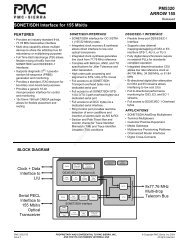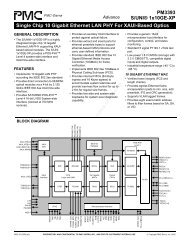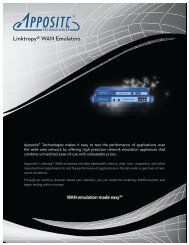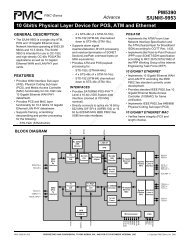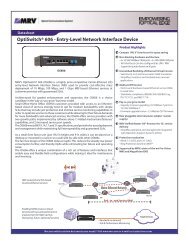Architecture, Engineering, and Related Services [NAICS 5413]
Architecture, Engineering, and Related Services [NAICS 5413]
Architecture, Engineering, and Related Services [NAICS 5413]
You also want an ePaper? Increase the reach of your titles
YUMPU automatically turns print PDFs into web optimized ePapers that Google loves.
• Increasingly globalized workforce. U.S. engineers <strong>and</strong> U.S. engineering firms will have to<br />
continue to compete with an increasing number of engineers from Asian countries, who<br />
either enroll in programs within native countries or come to the U.S. to pursue their<br />
engineering education. In order to stay competitive, trade <strong>and</strong> professional associations as<br />
well as firms themselves are participating in K-12 STEM outreach initiatives designed to call<br />
attention to the importance of teaching high-quality science, technology, engineering <strong>and</strong><br />
mathematics curriculum in U.S. schools (STEM Education Coalition, 2012). In addition, firms<br />
should develop a strong underst<strong>and</strong>ing of the types of specialized jobs <strong>and</strong> services that<br />
businesses need <strong>and</strong> continue to innovate, since some engineering services will be<br />
outsourced to non-U.S. firms who can afford to complete jobs more cost efficiently.<br />
• Continued evolution of sustainable engineering guidelines. While sustainability is already<br />
considered a priority for engineers embarking on new projects, LEED certification for<br />
engineers <strong>and</strong> buildings will continue to play a significant role in driving measurable<br />
building sustainability. Although LEED certification was developed by the U.S. Green<br />
Building Council, it is now used in over 30 countries. The LEED rating system currently in<br />
place will need to evolve as additional issues arise that are not currently addressed by the<br />
current guidelines. These changes may have significant impacts on the design, engineering<br />
<strong>and</strong> construction activities of markets around the world.<br />
• Greater focus on engineering for development. While engineering has been recognized as a<br />
field essential to the progress of humankind <strong>and</strong> modern society, large scale issues<br />
involving, energy, transportation, climate change, management of natural resources <strong>and</strong><br />
provision of clean drinking water in developing countries has caused industry players to pay<br />
greater attention to how engineering as a discipline can help address these challenges<br />
moving forward. In 2010, UNESCO released its first ever report on engineering <strong>and</strong><br />
development globally (UNESCO, 2010). Increasingly, firms are engaging in projects that seek<br />
to create better infrastructures for underserved communities, reduce poverty <strong>and</strong> improve<br />
quality of life. Professional societies such as the American Society for Mechanical Engineers<br />
are collaborating with organizations such as <strong>Engineering</strong> for Change <strong>and</strong> Engineers Without<br />
Borders to bring together practitioners in the industry around such initiatives (ASME, 2012).<br />
INFORMATION SYSTEMS ANALYSIS<br />
This field has a high degree of technological change, making it important for engineers to keep up to<br />
date with the tools, software <strong>and</strong> the additional technical skills that are required to meet the needs of<br />
their clients. Technology is used as a source of differentiation <strong>and</strong> can be a competitive advantage for<br />
firms that invest in information systems that have significantly superior capabilities than those of<br />
other players. For those firms looking to exp<strong>and</strong> beyond their existing markets, technological<br />
investments may help these organizations secure international contracts by offering a greater variety<br />
of services (IBIS, 2012). While the industry is labor <strong>and</strong> service driven <strong>and</strong> generally not capital<br />
intensive, a substantial portion of capital expenditures can be attributed to IT investments in<br />
hardware <strong>and</strong> software (IBIS 2012).<br />
Like the architectural services industry, BIM is an increasingly important approach to overseeing<br />
engineering projects. (Please see architectural services information systems analysis for more details<br />
on BIM) <strong>Engineering</strong> firms may source their BIM tools <strong>and</strong> services from similar vendors as<br />
architecture firms, however, the products themselves <strong>and</strong> the way that engineers approach BIM is<br />
7


![Architecture, Engineering, and Related Services [NAICS 5413]](https://img.yumpu.com/34014793/8/500x640/architecture-engineering-and-related-services-naics-5413.jpg)




